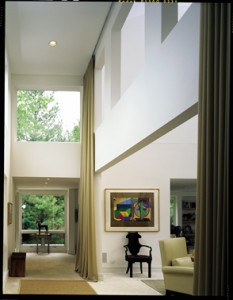
For the Designer
As the designer, you first need to make certain your client understands EXACTLY what is being designed and how it will operate. You need to find out what the client’s complaints are all about. It may be the color, it may be they hang too long, or maybe too short, or cover too much of the glass…all of these are adjustments; however, the mistakes must be taken care of quickly.
I love custom draperies and I have been doing them for 40 years, but some clients don’t like draperies and when you get them to invest a lot of money in them, they may not understand what the finished look or effect will be. It is your duty to make them understand what they are getting even if you have to do a mock-up using muslin to educate them as to what they are getting or if drawings will suffice, then show them a drawing or elevation or free-hand sketch…just something so they understand it.
If your drapery house made a mistake, did faulty installation, or the electronics don’t work properly, make certain to call the fabricator/installer and get them back right away so the bad taste in your client’s mouth is gone quickly. If your client simply hates the treatments, calmly find out what it is they don’t like and find out what would satisfy them.
A few years ago I did a casement treatment between a lower level media room and an exercise room and when the casements went in they would not hold a pleat no matter how hard we steamed them. When I complained to the fabric house, they told me it was my duty to know what fabrics would or would not hold a pleat. When I reminded them that it was a full width of fabric hanging on a 7’-0†high panel under the heading of Draperies in their showroom, I let them know I assumed there was not difficulty in pleating them because they were pleated in the showroom and there was no warning on the tags that said they should not be used for draperies.
They refused to do anything so I had to spend $9,000 to replace the draperies for my client and I have not stepped into that showroom again. They should have stood behind their product, but you have to be strong and be a business person…your clients need to know they have you to lean upon. My client was sorry I had to do this, but they are still wonderful clients and I have done a lot of work for them since this problem arose.
For the Client
From the client’s perspective, draperies represent a foreign language and most designers know that, so please let your designer know when you don’t understand something and don’t just trust your designer to know what you want. First, you need to be clear about whether or not you want draperies at all, and if you do, are they purely for decoration or do you want privacy, blackout, drama, no glass covered, or what is the function of a window treatment. There are many forms of draperies and you might want to find photos of something you like or let your designer know what you like/dislike about draperies.
Draperies usually soften a room and can create a major difference in the look of a room simply by being there, and if they achieve what the desired affect is, you will still need to get used to having them there since you are not used to them. Just recently after many discussions with a client who said he wanted no draperies is asking why his windows seem so bare…now he wants the draperies and the plaster crown moldings won’t allow for us to do that, unless we do major remodeling.
Also remember, draperies will cost more than blinds or solar control shades…there is a lot of money in labor and a lot of fabric will cost some additional money depending on how important the treatments are, how decorative the fabric is and the size of the windows…but the overall look can make a room truly wonderful.